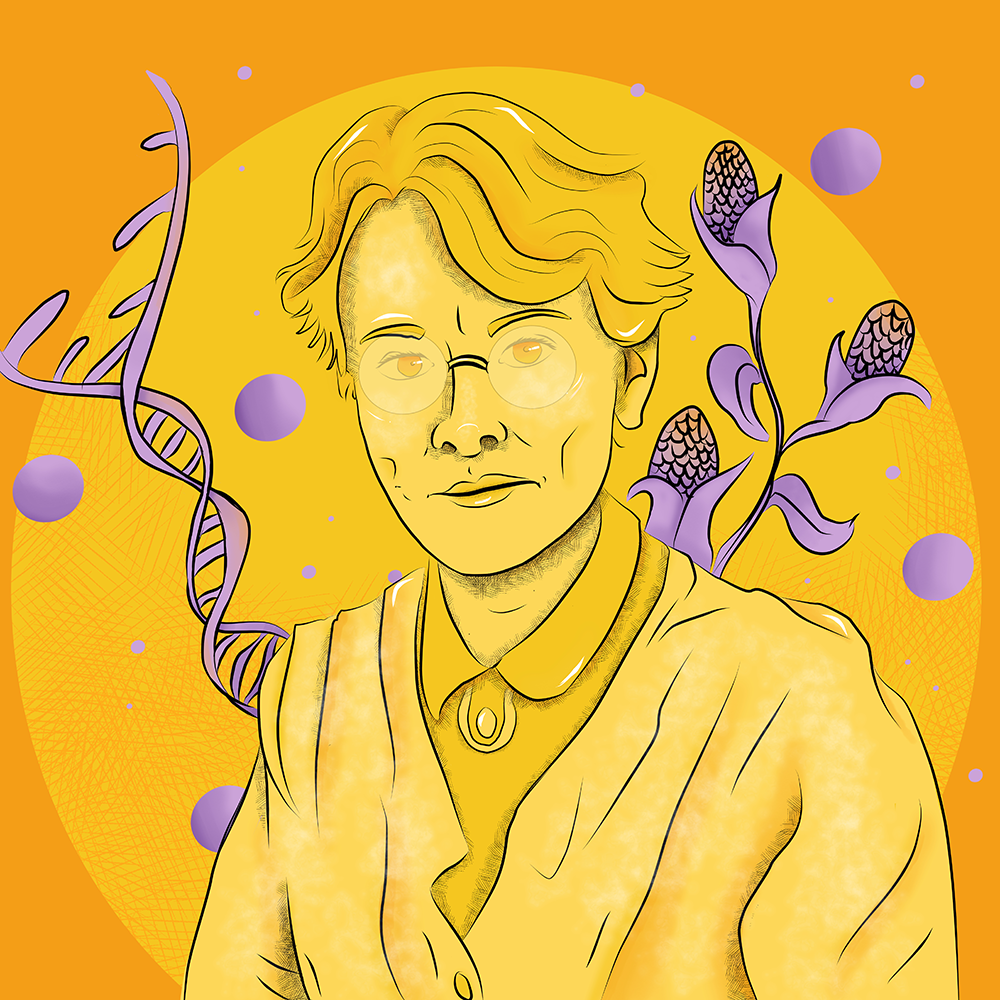Barbara McClintock
Visionary geneticist who showed that chromosomes are not static entities
When genetics was still a niche discipline, a young American biologist named Barbara McClintock, who was fascinated by genes and chromosomes, set out to study them in maize. Her experiments revealed that chromosomes are not at all unchangeable, fixed entities most scientists at the time believed them to be. Instead, Barbara observed various mechanisms that enable genes to be exchanged between chromosomes. Her revolutionary findings were met with scepticism and opposition, but in the end the scientific world recognised their importance.

Quick facts
16 June 1902 – 2 September 1992
American plant biologist and geneticist; Nobel Prize in Physiology or Medicine (1983)
Important discoveries: Genes are parts of chromosomes, and chromosomes are not static entities – they can exchange genetic material by ‘crossing over’ or via ‘jumping genes’.
Barbara McClintock was born in 1902 and grew up in Connecticut and New York. In high school, Barbara developed a passion for science and wanted to study biology upon finishing school. Her mother preferred to see Barbara get married soon, rather than attend university, as the family had little money to support her. Barbara’s father, on the contrary, respected his daughter’s wish and in 1919, Barbara joined the College of Agriculture at Cornell University.
Her studies went very well – between 1923 and 1927, Barbara obtained a Bachelor’s, a Master’s, and finally a PhD degree in botany. It was during her undergraduate studies that she first got in touch with genetics.
In 1921, Barbara attended an introductory course in genetics, which was taught by plant scientist and geneticist Claude B. Hutchison. At the time, genetics was not widely recognised as a scientific discipline among biologists – some actively rejected the revolutionary concepts in the field. The undergraduate course was attended by few students, most of whom were planning to work in agriculture. Hutchison, however, recognised the enthusiasm and dedication Barbara had for basic science, so he invited her to join an advanced class in genetics – the only other genetics class at Cornell at that time, which was normally only open to graduate students. The invitation to join the advanced course was the decisive event that made Barbara become a geneticist, as she would recall later.
In a different class, taught by Professor Lester W. Sharp, Barbara learnt about cytology – the study of cellular structures and their functions. Sharp’s main interest was the structure of chromosomes and what happens to them when cells divide. It was known that chromosomes contained heritable information, which gets passed on from parents to offspring, but how exactly they functioned was enigmatic. Fascinated by the topic, Barbara decided to combine genetics and cytology, and after finishing her PhD training, she set up a cytogenetics research group at Cornell’s Plant Breeding Department.

As her main object of study, Barbara chose the corn crop. Maize is very well suited to study the inheritance of specific traits, such as the colour of its kernels, because each kernel in a cob is a separate embryo with its own combination of genes. Experiments in genetics often require scientists to study a large number of individuals and perform statistical calculations to understand what’s happening, and corn crops that contain hundreds of kernels allow researchers to do so in a short period of time.
In 1931, working with graduate student Harriet Creighton, Barbara managed to obtain the first experimental proof that genes are physically located on chromosomes. This concept had been suggested by the famous fly geneticists Thomas Hunt Morgan some 20 years before, but scientists had lacked the experimental techniques to prove it. By perfecting the techniques to observe chromosomes, and developing novel ones, Barbara and Harriet could confirm Morgan’s hypothesis and could show that chromosomes exchange genetic information by physically ‘crossing over’ their arms during cell division, which can lead to the appearance of new traits in the offspring.
At Cornell, and then at the University of Missouri and Cold Spring Harbor Laboratory, Barbara went on to study the characteristics of chromosomes and the position of genes on them. She observed that chromosomes could break when they were hit by X-rays or when cells divide, and that cells were able to rejoin broken chromosome ends – sometimes leading to changes in the genetic code known as mutations. She also found that small pieces of chromosomes could precisely switch positions, ‘jumping’ from one chromosome to another.
With each new experiment, it became clearer that chromosomes are not fixed entities. They can cross over, exchange genes, break and be pasted together again. Some of these rearrangements occur at random positions, while others happen at specific chromosome sites and can even be regulated by nearby genetic ‘control units’. But these concepts didn’t find too many supporters in the beginning.
Barbara’s revolutionary findings were met with scepticism and opposition from many colleagues. And while Barbara continued to do research, she stopped publishing her results in scholarly articles in 1953, as her ideas were not widely accepted, or even rejected at the time of discovery. In many cases, their significance was understood only much later. In the end, however, the scientific community realised the importance of Barbara’s work, and she was awarded the Nobel Prize in Physiology or Medicine in 1983.